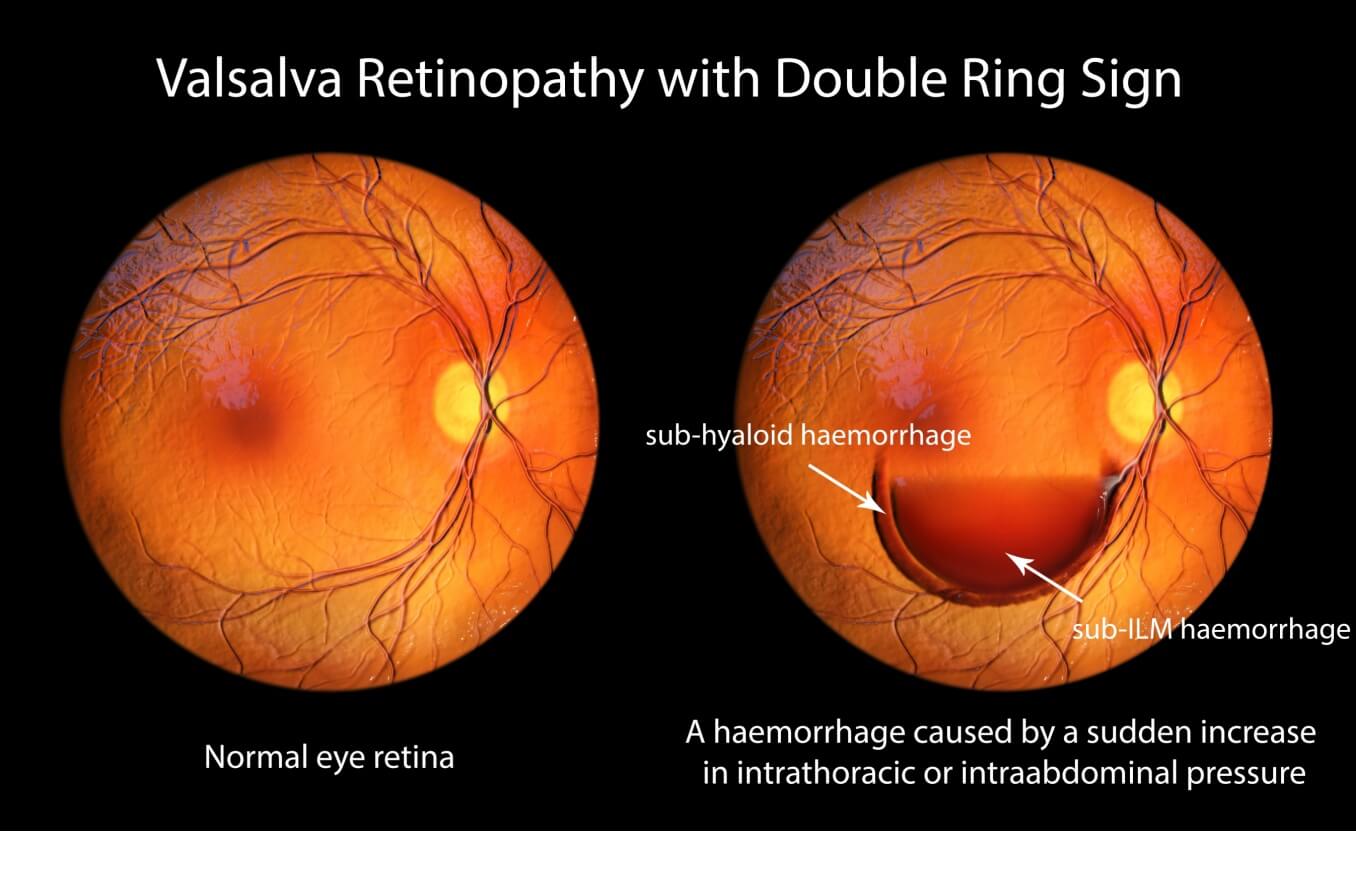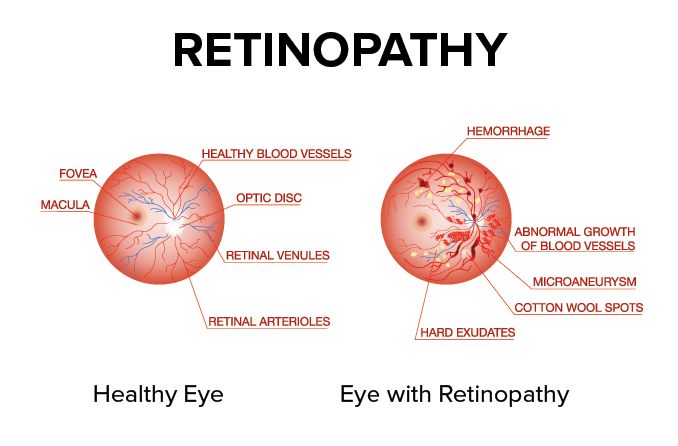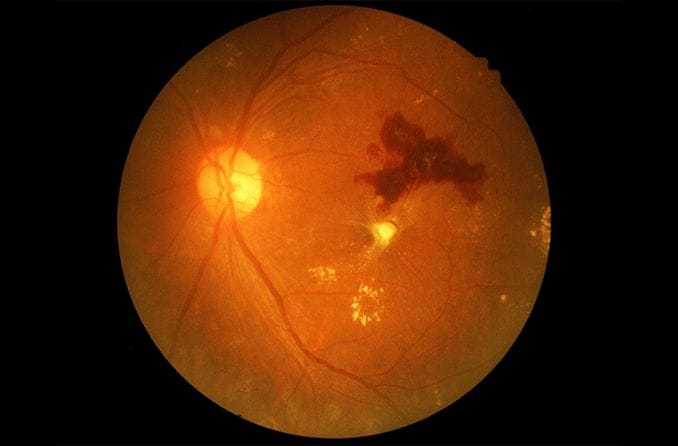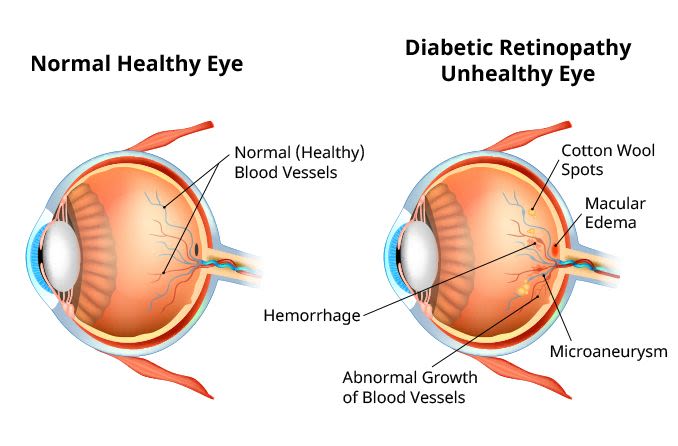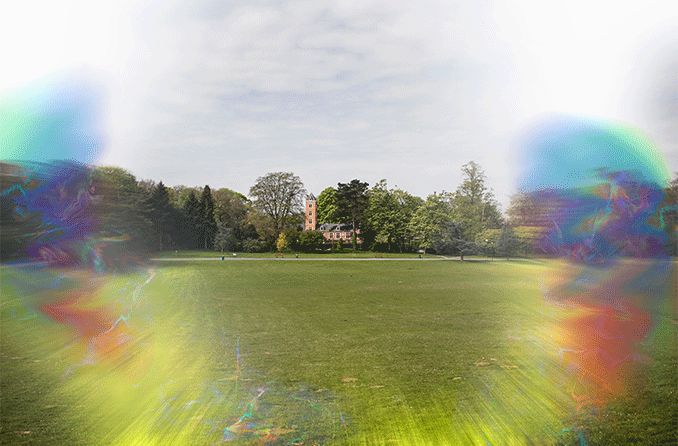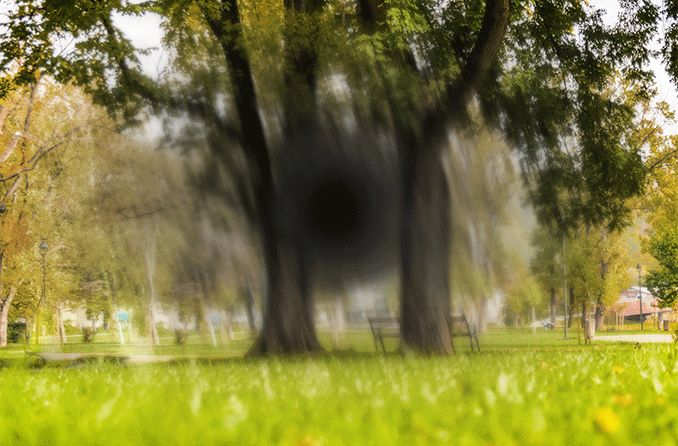What is valsalva retinopathy?
Valsalva retinopathy is a type of retinopathy that is triggered by increased pressure in the chest or abdomen. This heightened pressure can cause the blood vessels in the retina to rupture and bleed (retinal hemorrhage). Valsalva retinopathy is associated with force caused by the Valsalva maneuver.
The Valsalva maneuver is when a person quickly and forcefully breathes out while a part of their larynx remains closed. (The larynx is the area of the throat that controls breathing.) It is essentially holding your breath and straining.
This can happen during actions such as vomiting or coughing. The harder the person strains, the higher the risk they have of bursting a blood vessel in the retina.
Anyone can experience Valsalva retinopathy. This is regardless of their age, race, gender or health status.
What causes Valsalva retinopathy?
Valsalva retinopathy is caused by the Valsalva maneuver. This is an action in which a person puts extreme force on their chest or abdomen while holding their breath. The pressure can sometimes be enough to cause a blood vessel to burst in the retina. This establishes Valsalva retinopathy.
The maneuver was named after the Italian physician, Antonio Maria Valsalva, who discovered it in the 1700s. Valsalva retinopathy was first identified in 1972 by Dr. Thomas Duane.
Specific activities that may trigger a Valsalva maneuver include:
- Straining to defecate
- Forceful vomiting
- Coughing
- Sex
- Labor
- Lifting heavy objects
- Compression injuries
- Playing wind instruments (instruments you blow into)
- Vigorous exercise
In many circumstances, the Valsalva maneuver is performed unintentionally. People sometimes use the maneuver on purpose to equalize or “un-pop” clogged ears. But doctors do not usually recommend this (especially given the risk of a burst blood vessel).
The above actions can lead to Valsalva retinopathy. Performing them is not necessarily a guarantee for a retinal bleed.
Symptoms of Valsalva retinopathy
Symptoms of Valsalva retinopathy are generally painless. Although they can be severe for some more than others.
The following symptoms have been reported in cases of Valsalva retinopathy:
- Sudden blurred vision
- Partial vision loss (this occurs more often in one eye than in both)
- Eye floaters
- A red hue in the visual field
- A dark or blind spot in the person’s vision (called a scotoma)
The severity of these symptoms depends on how much force is involved with the Valsalva maneuver. It also depends on the location of the burst blood vessels.
SEE RELATED: Blurry vision in one eye or both eyes
Treatment and management
Hemorrhages associated with Valsalva retinopathy usually heal on their own over a period of weeks to months. That said, the primary treatment for Valsalva retinopathy is observation to make sure the condition doesn’t change or worsen. Patients are encouraged to sit in upright positions to encourage proper blood flow as well.
Doctors also recommend that patients refrain from intense exercise. And they should avoid taking blood thinners until the condition is healed.
There are some conditions that can increase the risk of Valsalva retinopathy occurring. These include diabetic or hypertensive retinopathy and congenital retinal artery malformations.
Those who experience large or severe bleeds may require additional treatment. This can include surgical or laser procedures. These cases are more rare, but it’s important that they are addressed early on to preserve vision.
Differential diagnosis
There are some conditions that share certain symptoms and features of Valsalva retinopathy. These can include issues such as the following:
- Sickle cell anemia/sickle cell retinopathy
- Hypersensitive retinopathy
- Anemic retinopathy
- Posterior vitreous detachment
- Ruptured macroaneurysm
- Terson’s syndrome
- Battered baby syndrome
If you experience a retinal bleed or symptoms that align with Valsalva retinopathy, contact your eye doctor as soon as possible. A medical evaluation is crucial to receive the correct diagnosis and treatment plan for any problem that may be present.
Can you prevent Valsalva retinopathy?
Most Valsalva retinopathy cases are caused by quick and unintentional physical force. So it can be difficult to prevent the condition completely. But there are some things you can be cautious of to avoid experiencing Valsalva retinopathy.
Consider:
- Practicing breath control during strenuous activities
- Only lifting weights and heavy objects that you are capable of handling
- If you are constipated, taking a stool softener to avoid strain while defecating
- Being gentle when playing musical instruments that you have to blow into
- Not performing the Valsalva maneuver to relieve congested ears
Always contact an eye doctor if you believe there is a problem with your eye(s). Conditions like Valsalva retinopathy often heal on their own. But it’s still important to get checked out in case you experience something more serious.
